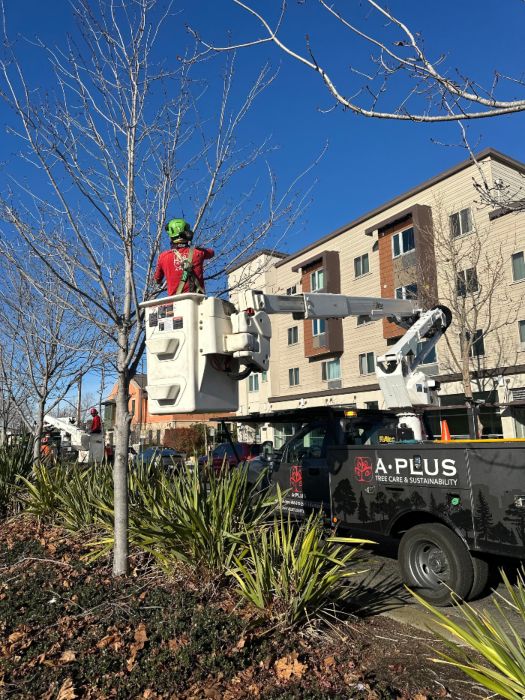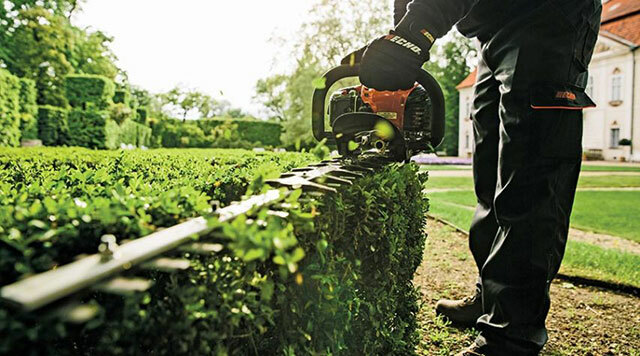The terms tree pruning and tree trimming are often used interchangeably when discussing the removal or cutting back of tree branches. They sound very similar and are frequently thought of as the same. But if you want to nerd out a little, read on to understand the differences between the two. Plus, having knowledge of tree pruning and trimming can help you determine the best way to care for your trees.
What is Tree Pruning?
Tree pruning is the selective removal of certain tree parts, such as branches, buds, or roots. Pruning is usually done to promote healthy growth, enhance the tree’s structure, and remove any damaged or dead parts of the tree. Unlike trimming, pruning is a more targeted approach that aims to improve the overall health and safety of the tree.

Is Pruning Healthy for Trees?
Yes, it is! When done correctly, pruning can reduce the risk of branch breakage and disease spread. Pruning eliminates dead or diseased branches, which could compromise the tree’s health and spread infection to other parts of the plant. Pruning also helps improve the structure of a tree. By removing branches that are growing in the wrong direction or are too close together, you can prevent future problems such as branch splitting or weak growth.
What is Tree Trimming?
Tree trimming is the cutting back of overgrown branches and foliage to improve a tree’s appearance and maintain its size. Trimming is primarily on hedges, shrubs, and small trees to keep them looking tidy and well-maintained. It can also be done to keep branches away from power lines, buildings, or other structures to maintain a safe distance between the tree and any obstacles. Unlike pruning, trimming focuses more on appearance or distance and less on the overall health of the tree.

Is Trimming Healthy for Trees?
When done properly, trimming is healthy for trees and plants. However, excessive trimming can damage a tree and stunt its growth by removing too many leaves and reducing its ability to photosynthesize. This can leave the tree vulnerable to stress and disease.
The Differences Between Pruning and Trimming
Pruning involves the selective removal of dead, diseased, or weak branches, and it often requires professional knowledge to be done effectively. The primary goal of pruning is to improve the tree’s long-term health.
Trimming is more about appearance and control. It involves cutting back overgrown or unruly branches to shape the tree and is more focused on maintaining the tree’s form and size.
Why Does the Difference Matter?
Understanding the difference between pruning and trimming helps to ensure that your trees receive the right kind of care. If your tree has diseased or damaged branches, pruning is necessary to remove the problem areas and restore the tree’s health. If you want to maintain a specific shape or control the size of your tree, trimming is the better option.
What Kinds of Tools Are Needed to Prune or Trim?
Pruning Tools:
– Pruning shears: used for cutting small branches and twigs.
– Loppers: larger than pruning shears, used for cutting thicker branches.
– Pruning saw: used for cutting large branches that are too thick for shears or loppers.
– Pole pruners: used to access branches high up without climbing.
Trimming Tools:
– Hedge trimmers: used for cutting back hedges, shrubs, and small trees.
– Hand shears: for detailed trimming work, allows for more precision.
– Electric or gas-powered trimmers: speeds up the trimming process for large hedges or shrubs.
How to Know Whether You Need Tree Trimming or Tree Pruning?
Deciding whether your tree needs trimming or pruning depends on its condition and your goals for the tree. If the tree has dead or diseased branches, use pruning to prevent the spread of disease and improve its health. Look for signs like discolored leaves, decayed bark, or brittle branches.
On the other hand, if your tree is growing too large for its space or you want to improve its appearance, trimming is the best option. Overgrown branches that interfere with walkways, buildings, or other plants signal the need for trimming. If you’re unsure, a professional arborist can assess your tree’s condition and recommend the appropriate service.
It is Best to Hire Professionals to Trim and Prune Your Plants
While some minor trimming or pruning can be done on your own, hiring a professional tree care company is often the safest and most effective option. Arborists have the training, experience, and equipment to properly care for your trees without causing damage. They can also spot early signs of disease or structural problems that may go unnoticed by an untrained eye. Improper pruning or trimming can lead to weakened branches, poor growth, and long-term damage to the tree, or even personal injury and property damage. Need tree pruning or trimming? Contact the A Plus Team today!





